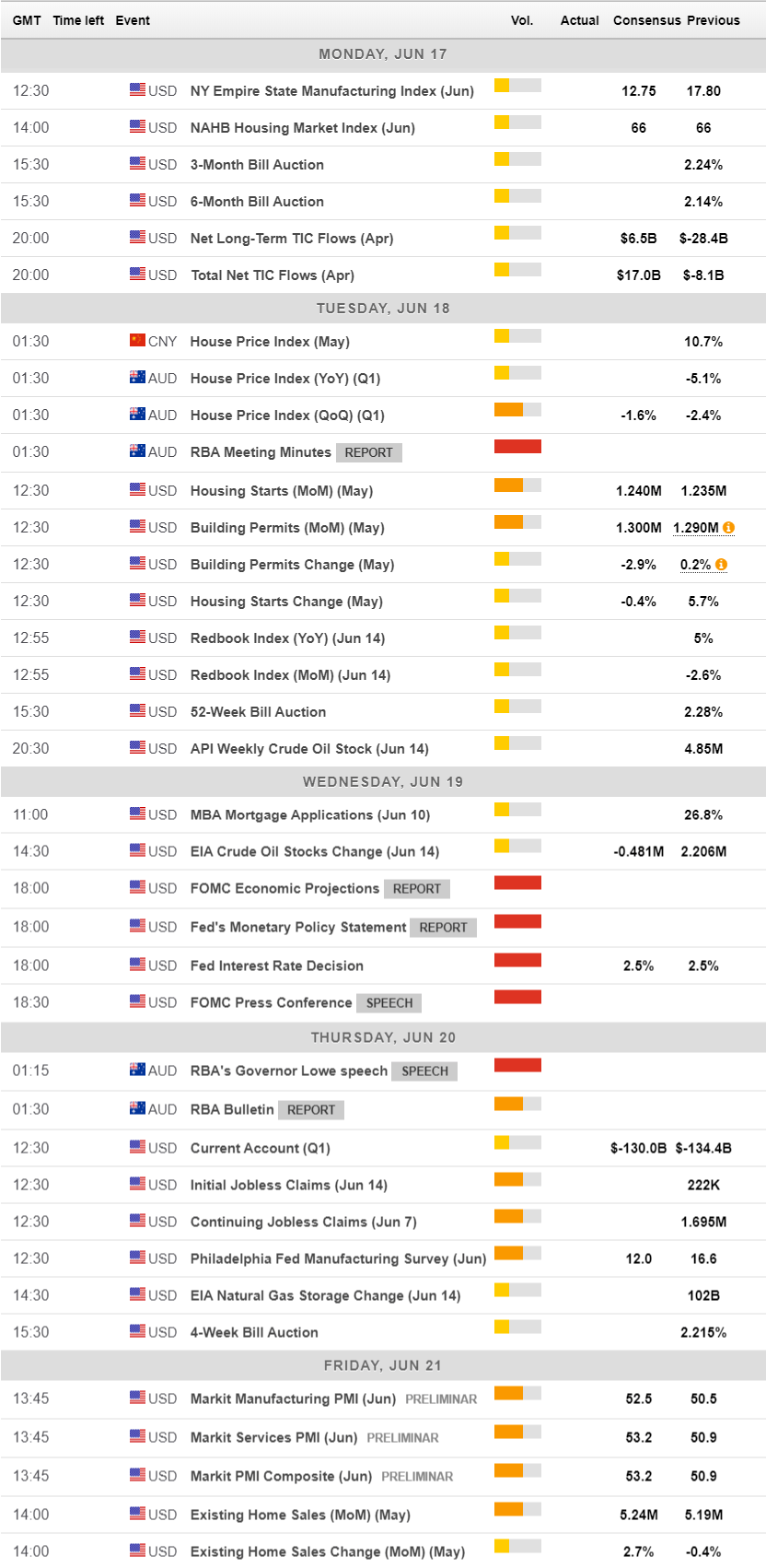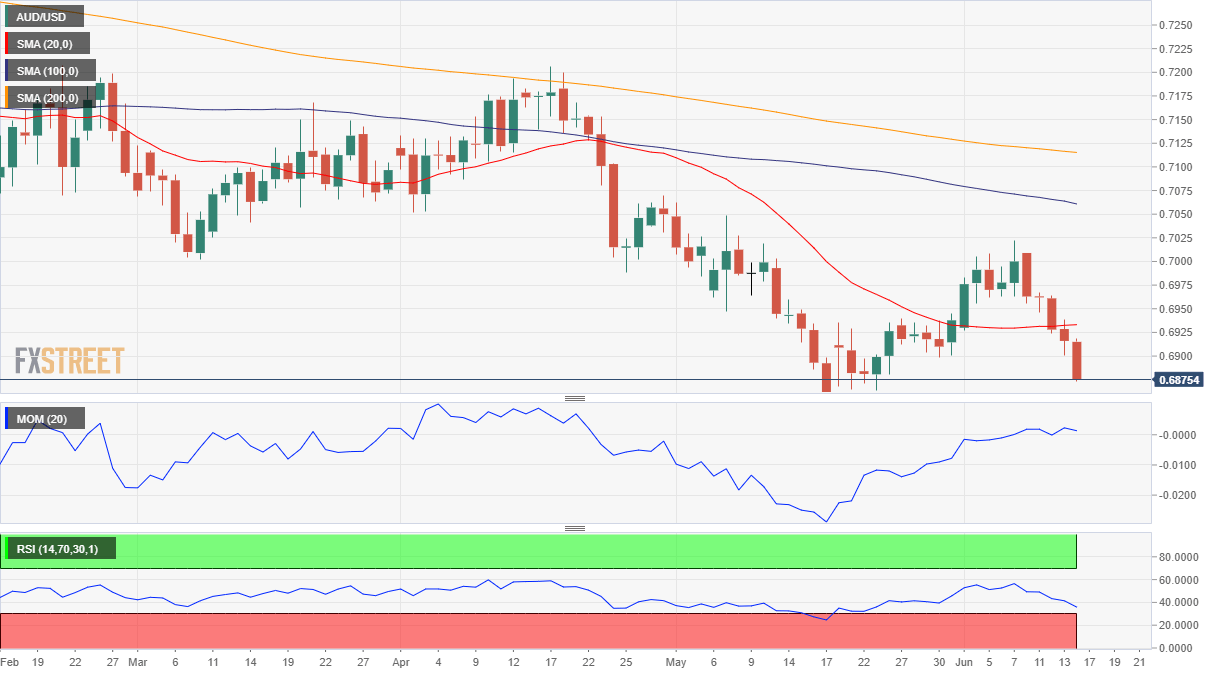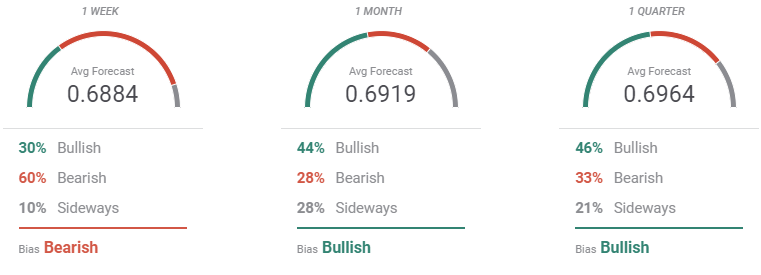- AUD/USD resumed its decline, trimmed in one week the gains of the previous three.
- Chinese data and trade tensions with the US weighed on the Australian currency.
The Australian dollar neared its yearly low Friday, ending the week in the 0.6870/80 region. Risk aversion and encouraging dollar data were behind the pair's decline, in spite of the market is pricing in an upcoming rate cut in the US.
Australia released this week its May employment figures and, despite the impressive headline, the local currency fell. The economy created 42.3K new jobs, yet a more in-depth read of the report indicates that 39.8K of those were part-time jobs, with only 2.4K full-time new positions. The unemployment rate remained steady at 5.2% vs. the market's expectations of 5.1%. Finally, the participation rate increased to 66.0% from 65.9%. The lackluster report maintains the pressure on the RBA, looking to drive down unemployment and boost inflation. Also, and as a result of RBA's rate cut in the previous week, the Westpac Consumer Confidence index collapsed in June, diving to -0.6% after printing 0.6% in May. The NAB monthly survey showed that business conditions fell to their lowest in six years, with the index down to 1 point in May, although Business Confidence recovered, with the index up to 7 vs. the previous 0.
The Chinse macroeconomic calendar was also quite busy, with the country publishing its May trade figures. The trade surplus in dollar terms more than doubled the market's expectations reaching $41.65B, as imports increased by 7.7% while exports fell by 2.5%. Inflation in May came in as expected, up to 2.7% in YoY, while New Loans in the same month were better than in April but below the market's expectations, up by 1,180B. Early Friday, China released May Retail Sales and Industrial Production, with this last missing the market's expectations, adding pressure on the Aussie.
These upcoming days, the US Federal Reserve monetary policy meeting will be the most relevant event, scheduled for Wednesday. Speculative interest will be looking to confirm that policymakers have somehow dropped the 'patient' stance and are now more willing to proceed with a cut. A more hawkish outcome would highlight the imbalances between the Fed and the RBA and result in further weakness in the pair.
In the Asian side of the pair, the macroeconomic calendar will be utterly light, as there're just some minor Housing data scheduled in Australia and China on Tuesday. The same day, the RBA will release the Minutes of its latest meeting, although most of their content has already been communicated.

AUD/USD Technical Outlook
The AUD/USD pair is trading near the 0.6865 support, a multi-month low from where it bottomed twice these last few days. The pair lost this week what it gained in the previous three, a sign of bears' determination. In the weekly chart, technical readings favor additional declines, as its trading far below all of its moving averages, while technical indicators resumed their declines within negative levels.
In the daily chart, the pair settled below a directionless 20 DMA, while the larger ones retain their bearish slopes above this last. Technical indicators have crossed their midlines into bearish territory, retaining their bearish slopes and anticipating further slides ahead. 0.6865 is the immediate support, followed by 0.6820, a long-term static level. A break below this last seems likely with a hawkish surprise coming from the Fed, with the pair then heading toward the 0.6740/70 price zone. Resistances, on the other hand, are located at 0.6900, 0.6940, and 0.7000.
AUD/USD sentiment poll
The AUD/USD pair will likely extend its decline next week, according to the FXStreet Forecast Poll which shows that sentiment toward the pair remains bearish short-term. In the one month and three months views, however, bulls are a majority. In both cases, the average target comes below 0.7000, somehow indicating that the expected decline is related to the dollar's weakness and not sudden demand for the Aussie.
The moving averages in the Overview chart are bearish in the three timeframes under study, and in the three cases, with the largest accumulation of targets below the current level, keeping the risk skewed to the downside.
Related Forecasts:
Information on these pages contains forward-looking statements that involve risks and uncertainties. Markets and instruments profiled on this page are for informational purposes only and should not in any way come across as a recommendation to buy or sell in these assets. You should do your own thorough research before making any investment decisions. FXStreet does not in any way guarantee that this information is free from mistakes, errors, or material misstatements. It also does not guarantee that this information is of a timely nature. Investing in Open Markets involves a great deal of risk, including the loss of all or a portion of your investment, as well as emotional distress. All risks, losses and costs associated with investing, including total loss of principal, are your responsibility. The views and opinions expressed in this article are those of the authors and do not necessarily reflect the official policy or position of FXStreet nor its advertisers. The author will not be held responsible for information that is found at the end of links posted on this page.
If not otherwise explicitly mentioned in the body of the article, at the time of writing, the author has no position in any stock mentioned in this article and no business relationship with any company mentioned. The author has not received compensation for writing this article, other than from FXStreet.
FXStreet and the author do not provide personalized recommendations. The author makes no representations as to the accuracy, completeness, or suitability of this information. FXStreet and the author will not be liable for any errors, omissions or any losses, injuries or damages arising from this information and its display or use. Errors and omissions excepted.
The author and FXStreet are not registered investment advisors and nothing in this article is intended to be investment advice.
Recommended Content
Editors’ Picks
AUD/USD posts gain, yet dive below 0.6500 amid Aussie CPI, ahead of US GDP

The Aussie Dollar finished Wednesday’s session with decent gains of 0.15% against the US Dollar, yet it retreated from weekly highs of 0.6529, which it hit after a hotter-than-expected inflation report. As the Asian session begins, the AUD/USD trades around 0.6495.
USD/JPY finds its highest bids since 1990, approaches 156.00

USD/JPY broke into its highest chart territory since June of 1990 on Wednesday, peaking near 155.40 for the first time in 34 years as the Japanese Yen continues to tumble across the broad FX market.
Gold stays firm amid higher US yields as traders await US GDP data

Gold recovers from recent losses, buoyed by market interest despite a stronger US Dollar and higher US Treasury yields. De-escalation of Middle East tensions contributed to increased market stability, denting the appetite for Gold buying.
Ethereum suffers slight pullback, Hong Kong spot ETH ETFs to begin trading on April 30

Ethereum suffered a brief decline on Wednesday afternoon despite increased accumulation from whales. This follows Ethereum restaking protocol Renzo restaked ETH crashing from its 1:1 peg with ETH and increased activities surrounding spot Ethereum ETFs.
Dow Jones Industrial Average hesitates on Wednesday as markets wait for key US data

The DJIA stumbled on Wednesday, falling from recent highs near 38,550.00 as investors ease off of Tuesday’s risk appetite. The index recovered as US data continues to vex financial markets that remain overwhelmingly focused on rate cuts from the US Fed.

